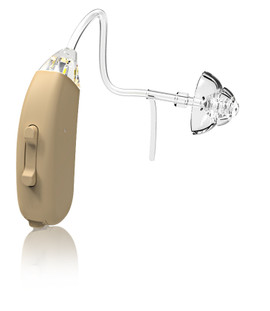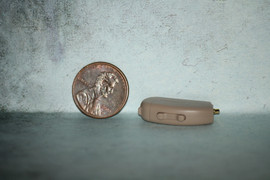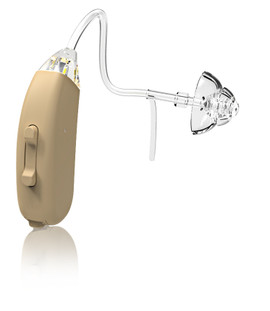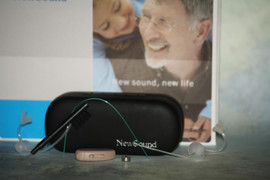Difference Between BTE vs RIC Hearing Aids
May 02, 2022
You may realize that you or a loved one needs a hearing aid. Looking for the right kind of hearing solution can be a daunting experience. If you have zeroed down upon about getting an additional medical instrument that can aid in hearing, worrying about which one to choose and which one to keep aside is absolutely normal.
Considering the number of options that are available out there in terms of affordable hearing aids, feeling confused, and in a dilemma is something that cannot be overlooked. Having said that, there are two major types of hearing aids that are being preferred by a majority of people out there – Behind-the-Ear (BTE) and Receiver-in-Canal (RIC).
So what are the dissimilarities between both of these popular hearing aids? If you are also pondering upon the same question, this post has your answers. Read on and know more.
The Structure of BTE and RIC Hearings Aids:
A BTE hearing aid is meant to hook over your ear’s top and rest behind. A tube is connecting an earpiece to the device, and all of the mechanics are equipped into the device that sits well behind the ear.
A RIC, on the other hand, is similar to BTE in terms of appearance. However, its receiver is in the ear canal instead of inside the device. Also, unlike the BTE aid, a small wire is connecting an earpiece to the hearing aid.
Dissimilarities between BTE and RIC:
- The Location of Speaker:
One of the major differences between these new sound hearing aids is the speaker (also known as a receiver) location. In Behind-the-Ear aid, the speaker comes inside the hard case with other electronic mechanisms.
On the other hand, the Receiver-in-the-canal aids feature speaker towards the end of a thin electrical wire that is connected with the case. And then, the speaker comes enclosed inside an earmold or an ear dome, which is flexible and placed inside the ear.
- The Size of the Device:
Traditionally, BTE hearing aids have a larger size, considering that all of the electronic parts are set up inside the case. The big size of the case also accommodates large batteries so as to provide more power of amplification.
Contrary to BTE, RIC hearing aids have a sleeker, slimmer design that attracts a majority of style-conscious people.
- The Amplification Aspect:
As mentioned above, the lengthened, traditional shape of BTE hearing aids enable them to provide larger battery and stronger amplifier. Hence, these devices can boost sound in both low-frequencies as well as high-frequency ranges.
Coming to RIC hearing aids, they provide a substantial range. However, the amplitude is not as high as a BTE device. Thus, this one would not be appropriate for those who have a severe hearing loss.
- The Beneficial Aspects:
Out of all the available styles, BTE is preferred for its powerful sound amplification. Hence, they are suitable for every level of hearing those, especially for the ones that have a severe loss. Furthermore, considering that every component is safely fit into the case, these styles are lesser vulnerable to wax and moisture damage. On top of that, their larger size makes it easier to remove and insert, replacing the battery and adjusting settings.
As far as RIC aids are concerned, their case doesn’t have a speaker fixed; thus, they look smaller and slimmer than BTE. With RIC devices, sounds can be more intact and clearer. Also, these tend to provide a natural-sounding speaker.
- All About Drawbacks:
Coming to the disadvantages, BTE styles, particularly the ones with maximum amplification, turn out to be thicker and more significant in size. Besides being highly visible, they could be uncomfortable and more cumbersome for some people.
The small size of RIC devices can turn out to be a hassle when it comes to cleaning, adjusting settings, inserting, and removing. Furthermore, it cannot accommodate a higher range of amplification as BTE can. The speaker placement in the ear can make it susceptible to wax and moisture buildup, unlike its counterpart.
You Heard it right!
In the end, both of these Bluetooth hearing aids cater to a specific type of user. Also, since they are available in varied styles and configuration systems, choosing an appropriate hearing aid surely depends on personal preference. So, figure out what you really require in assistance and then have your pick.










